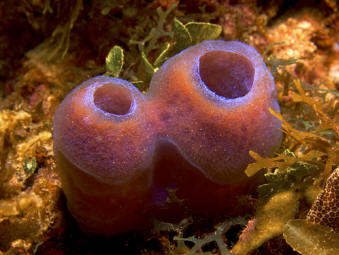Reproduction
Overview:
Sponges can be both diecious or monecies; this means that
they can either possess male or female organs, or they could
have both in the same organism. Along with this, sponges can
also reproduce sexually and asexually.

Let’s get sexual...
Sponge sexual reproduction is very simple, and much like that
of many other animal organisms. In sexual reproduction there is
a male structure that releases flagellated, motile sperm, and a
female structure that, when fertilized, releases a larva. The
larva then floats around in the aquatic environment until it
finds an ideal place to attach itself to the substrate. From
then on, the larva will grow via mitosis and soon reach its
inevitable goal of becoming another sponge.
Let's get asexual...
Sponges can go through a variety of processes in asexual
reproduction. Since the individual sponge cells are
totipotent, it allows very small amounts of sponge to break off
and form a whole new organism. There is a legend that if
you put a sponge in a blender and break up the organism, it will
be able to come back together forming an entire sponge again.
Because of the totipotentcy, this is an entirely true myth.
Sponges can also go through a process called budding.
In times of distress, the sponge can create somewhat of a pod of
cells. These cells can either form a new sponge when there
is a more supportive environment or retreat back into the
original mother sponge.
Return Back to Top
Continue Onward to Interactions...